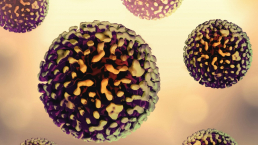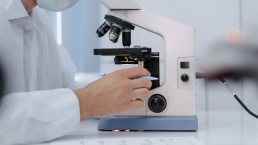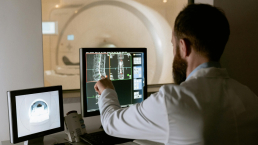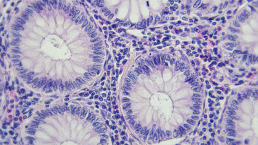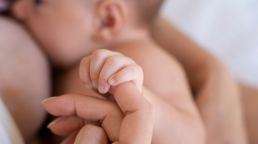
Postnatal Health – Mental and Physical Aspects.
Giving birth is one of the miracles of life. It happens every minute of every day. It’s thought that the most dangerous part of having a baby is during the birth process. However, recent studies show that the most dangerous time for mothers is up to a year after giving birth. Over 9 months, a mother’s body is put to the extremes to grow a human which concludes with birth. The natural birth process can be long and extremely damaging to the body. Furthermore, birth interventions can put the body under stress, resulting in serious long-term damage. Even surgical interventions come with risk factors, both during surgery and during the postnatal period.
It’s no surprise that it can take postnatal mothers up to 12 months, and even longer in some cases, to recover. Moreover, some are maintain life-changing injuries that they have to manage. Globally, one in three pregnancy-related deaths occurs one week to one year following delivery. In addition, in the US, between 2017 and 2019, 84% of maternal deaths were preventable. Furthermore, 53% of these deaths occurred between 7 days and a year after delivery.
In this article, we explore all the potential implications of postnatal complications, how they may affect physical as well as mental health, and how MDPI research is contributing to improving postnatal care.
Pregnancy-related Lumbopelvic Pain
Pregnancy and delivery can put a strain on muscles, joints, and ligaments. Pregancy hormones such as relaxin, estrogen and progesterone released in the third trimester to allow flexability during labour, emphasise this. This can result in pregnancy-related lumbopelvic pain, including lower back pain and pelvic girdle pain. These pregnancy-related complications are very common, and affect 86% of mothers in the third trimester. Furthermore, 33% of women who suffer from these complications during pregnancy will still experience symptoms up to 3 months postpartum; 25% of these women still have symptoms 12 months after delivery.
Depression and Anxiety Linked to Lumbopelvic Pain.
It’s been reported that women with pregnancy-related lumbopelvic pain experience a higher prevalence of prenatal anxiety and depressive symptoms. These symptoms continue in patients who develop chronic pain following birth. This chronic pain, when paired with sleep deprivation from caring for a newborn, can feel debilitating and furthers the risk of developing depressive symptoms. If you feel like you’re experience low mood and depressive thoughts or struggling during postnatal period, please contact a medical professional.
Pregnancy-related Lumbopelvic Research
A study published in a Special Issue of International Journal of Environmental Research and Public Health (IJERPH) investigates differences in lumbopelvic alignment following vaginal and caesarean delivery. The authors also studied how long after delivery these alignment changes at lumbopelvic sites occur. Identifying these alignment changes is important for postnatal recovery and exercise. Physical activity has shown to have a positive impact on the mental and physical health of postpartum women.
Lumbopelvic Aligment Changes and Postnatal Recovery
The information can be used to produce evidence-based exercise programs. Anatomical changes during pregnancy and birth should be taken into account when organising these programs to prevent further injury. The researchers identified that the ability of the abdominal muscles to stabilise the pelvis may remain compromised for at least a month following delivery. This suggests that alignment changes at the lumbopelvic site heal in the first month following delivery. As well as causing strain on muscle joints, the birth process can also cause injuries or lacerations to tissues within the reproductive organs. Increased stress on the area during birth can result in tears in the perineum.
Perineal Wound Breakdown
Perineum tears and grazes are very common and happen to 9 in every 10 first-time mothers who have a vaginal birth. There are four different grades of tear severity, starting with a first-degree tear. This type of tear does not require stitches, and because of this, it will heal the quickest, usually without complications.There are also second-degree, third-degree, and fourth-degree tears, which all require stitches. Usually, second-degree and third-degree tears can be completed in the delivery room. However, most patients with fourth-degree tears have are transferred to the operating room.
Moreover, many women need an episiotomy, a surgical incision made in the perineum, to allow more flexibility. This is needed if the baby is in a difficult position or to speed up the birth process if the baby is in distress. All of these complications usually require dissolvable stitches that take up to six weeks to heal, depending on the severity of the injury.
However, in some cases, the stitches can become loose, resulting in an opening in the wound. This can leave the wound vulnerable to infection and further complications; this is referred to as perineal wound breakdown.
Symptoms Associated with Perineal Wound Breakdown
Perineal wound breakdown is rare; however, it can greatly impact a woman’s mental and physical health. It can be caused by infection or bleeding underneath the wound caused by bruising.
In addition, it can also require further surgical correction. This can affect recovery time and even delay discharge from the hospital, delaying crucial bonding time for mother and baby.
Perineal wound breakdown can also cause symptoms such as persistent pain, infection, discomfort at the wound site, vaginal bleeding, urinary retention, defecation problems, and dyspareunia. Because these symptoms are intimate, they can be uncomfortable to talk about and can result in feelings of loneliness and isolation.
Perineal Wound Breakdown Research
An article in The Journal of Clinical Medicine conducted a study to improve postnatal quality of care by investigating the risk factors associated with perineal wound breakdown. They focused on factors independent of the healing capacity of the patients. Moreover, from this, the researchers were able to identify predisposing factors for perineal wound breakdown.
This included no history of vaginal delivery, a longer second phase of labour, instrumental delivery, and a greater degree of tearing. Furthermore, statistical analysis confirmed that instrumental delivery and a longer second phase of labour are risk factors for perineal wound breakdown.
Some post-birth complications can be immediately life-threatening. This includes peripartum cardiomyopathy, also known as postpartum heart failure.
Peripartum Cardiomyopathy
Peripartum cardiomyopathy (PPCM) is a rare but serious birth complication. It can develop in the last weeks of pregnancy to up to 5 months post pregnancy. However, most patients show symptoms in the first week after delivery. It’s characterised by significant left ventricular dysfunction, which resulting in heart failure.
The cause of peripartum cardiomyopathy is not fully understood; however, risk factors for the condition include obesity, a history of cardiac disorders, ethnic background, and preeclampsia hypertension during pregnancy.
The incidence rate of this condition is difficult to determine as it differs globally. The incidence of PPCM varies depending on ethnic and regional factors. For example, in the United States, it ranges from 1 in 1000 to 1 in 4000 deliveries.
There is so much that is unknown about this life-threatening condition. It’s difficult to diagnose as pregnancy induces some of the associated symptoms, including shortness of breath and swelling in the arms and legs. The prognosis is highly variable, and it can lead to further complications.
Most women recover full heart function following medical therapy. But, a small percentage of patients can develop severe heart failure and may require mechanical heart pumps or even a heart transplant.
Peripartum Cardiomyopathy Diagnosis Research
Early diagnosis is key to a fast recovery from this condition. An article published in a Special Issue of Diagnostics aims to add to the ongoing research in this area. The purpose of this study was to evaluate current diagnostic parameters and find prognostic indicators for recovery. They identified key dysfunctions in the heart as markers of the condition and that they may be useful for its diagnosis.
Women’s Postnatal Health
Pregnancy and delivery push women’s bodies to the extreme. However, recent studies show that the most dangerous time for mothers is up to a year after giving birth.
The statistic that 83% of maternal deaths were preventable in the richest nation in the world is staggering. As well as the fact that 53% of these deaths occur after returning home. Women are at serious risk of illness, injury, and death, especially in poorer countries. It’s clear to see that there is still a long way to go to improve maternal and postnatal health.
In this article, we explored the possible complications of postnatal health and how researchers are working to combat these conditions and complications.
If you’re interested in reading more about Women’s Health, please see our other content in this series here.

